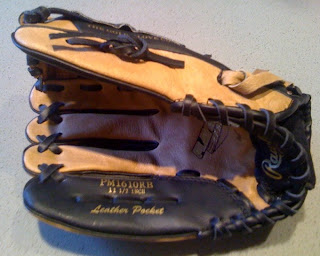To understand how to play baseball, you first must understand a baseball. This isn't some fancy Northern California get in touch with your inner self philosophy, this is truth derived from years of playing and watching the game of baseball.
Plus I've always wanted to cut a baseball in half.
When Noah and I went down to Coach's Playfield to help determine how the 5 year old attention span reacts to "intense baseball drills", we got a bit sidetracked by the incredible number of baseballs littering the edges of the field. With a little bit of mountaineering and and derring-do, we were able to rescue about a half dozen baseballs from the field. These being hardballs, they are of little use to us other than demonstrating the difference between the Shetland Reduced Impact Ball (SRIB) and the Hurts When it Hits You Hardball (HWHYH).
We picked the most beatedest up of the beat up HWHYH's and pulled out a hacksaw (I'm not crazy nor talented enough to deploy powertools on round objects) then cut this thing in half and took an extra slice to see what happens.

I had always heard about the cork and rubber core but always assumed it was cork surrounded by rubber, but in fact it is a rubber ball with specks of cork inside it. The yarn was not white as I expected but blackish blue. It was also a thicker yarn than I realized. And it is wound as tightly as I imagined.
Next step is to cut a SRIB in half to see the difference. My guess is that the only difference will be that the yarn isn't wound as tight. On the slice that we took, the yarn quickly fluffified and became soft without anything to compress it. This leads me to believe that the top layer will be loosely wound yarn for additional softness. We will soon see when we have a beat up enough reduced impact ball to sacrifice to the hacksaw.
And only then we can truly understand the baseball.






